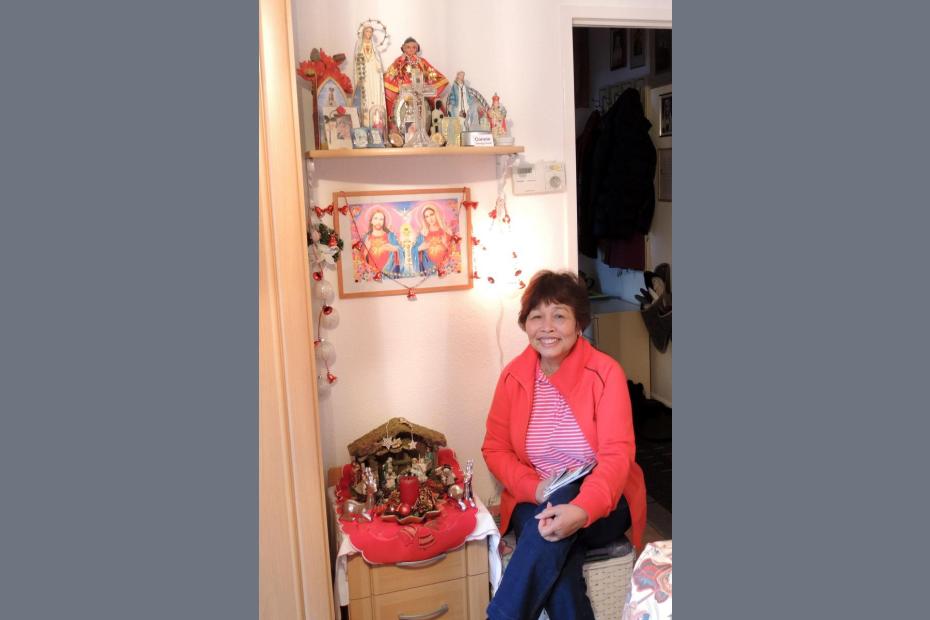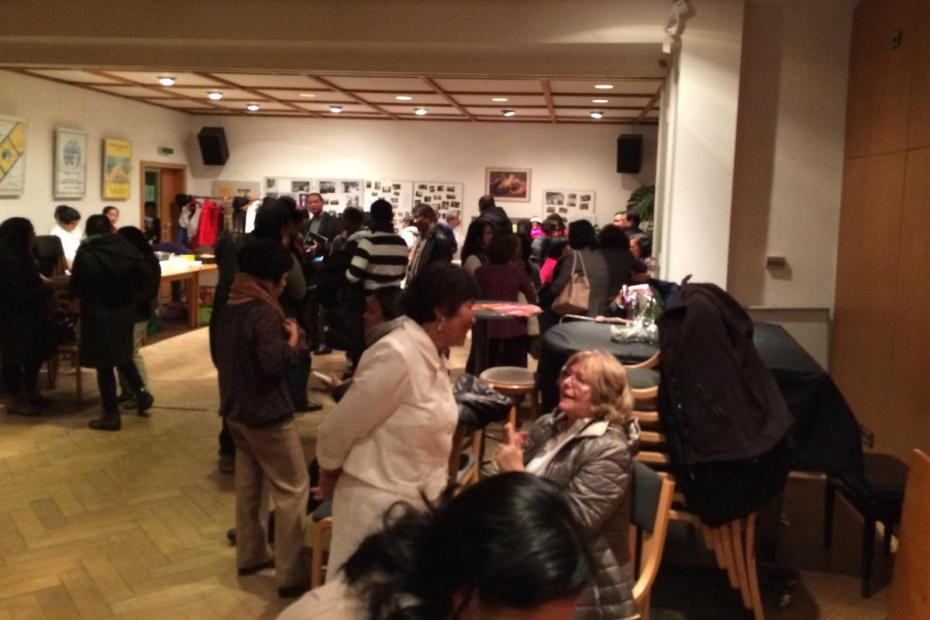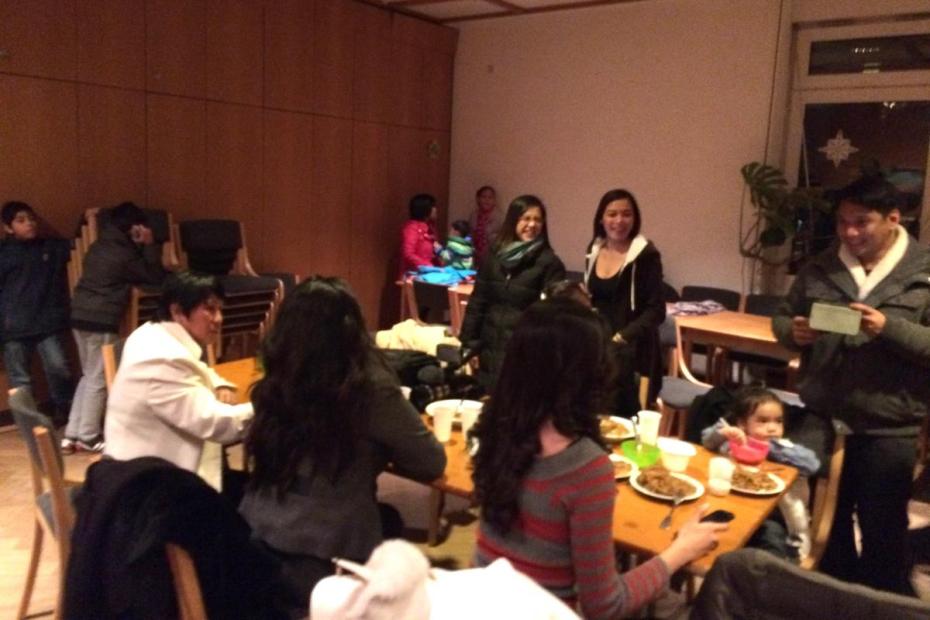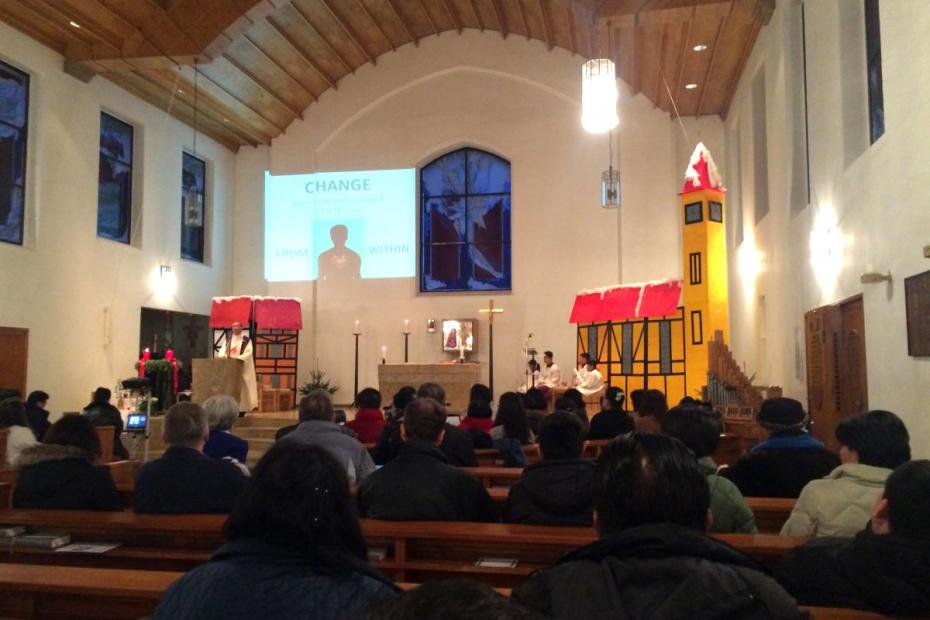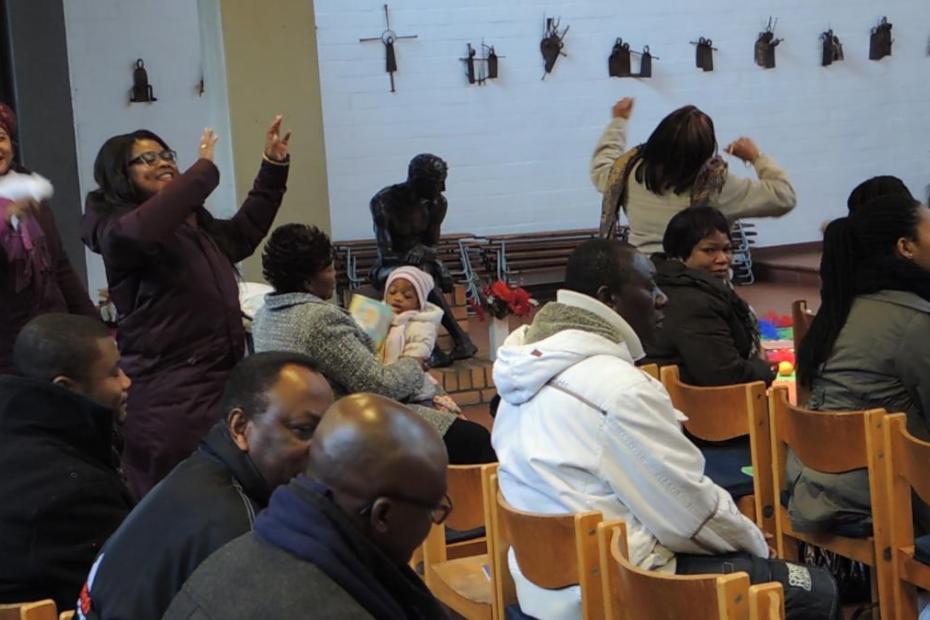In Germany, as in many parts of Europe, immigration is disrupting and sometimes reshaping prior senses of cultural identity. In some areas, particularly in the former East Germany, pushback against immigrants has at times been harsh and even violent, though larger numbers of Germans have responded in much more welcoming ways.1 Germany's constitution mandates that the country be particularly open to asylum seekers.
Berlin, perhaps more than most German cities, is a city shaped by immigration, attracting people from all over Germany, Europe, and the world. One-quarter of Berliners have non-German family origins, including the 13% of Berliners who are themselves immigrants. Turks constitute the largest community of immigrants, with at least 200,000 people claiming Turkish citizenship or heritage. Russians are the second largest group, followed by persons from the former Yugoslavia. At 45,000, Poles constitute the largest Catholic immigrant community.2
The Catholic Church in Berlin is overwhelmingly immigrant as well, in two senses. First it was shaped by the migration of Germans from Catholic parts of the country. They moved there in several waves -- as the Prussian capital became the national capital and swelled into one of the largest cities in Europe; after World War II, when many ethnic Germans in Catholic areas like Silesia were repatriated; after reunification in 1990, when Germans from Catholic regions in the west and south moved to Berlin to work for the government or in businesses in the newly re-designated capital. Second, many non-German people moved to West Berlin, and later to the region, drawn by the need for labor during the years of postwar growth, the free movement policies of the European Union, and possibilities of asylum.
These waves of migration never made Catholicism more than a minority religion in Berlin, but they are collectively responsible for almost all of the Catholic Church membership in the city. Though native Berliners "are becoming more secularized than ever before," according to one expert, "Catholic immigration to Berlin from other parts of Germany and abroad has kept the size of the Church stable.3
In this broad sense it is easy to say how immigration has shaped Catholic life, but in a different sense the impact of immigration is much more difficult to notice. While the diocese has reached out to find ways to be of service to non-German Catholic immigrants, and many of those immigrants worship in predominantly German parishes, few interviewees for this project4 identified ways that immigrants are changing ethnic German Berliners’ worship and practice. For the most part, parishes are available to immigrant communities in the afternoon so that these communities can worship and gather. Filipinos fill the Church at the Holy Spirit parish on Sunday afternoons, and stay for a communal meal and various church meetings afterwards. Ghanaians have a smaller but very lively afternoon worship service at St. Michael's church, Kreuzberg. International Catholic students from 38 universities gather weekly at a central campus ministry, usually on different nights than German students gather. Poles have their own basilica church. Those communities notwithstanding, the church of Berlin is very focused on awareness of and support for the church around the globe, but Berlin parish life focuses much more on assimilation than on trying to become a multicultural church.
Immigrants interviewed for this projects spoke of a number of social and religious challenges as they adapted to life in Berlin. Many immigrants end up marrying Germans, and talk about the adjustment that needs to take place in terms of adaptive cultural norms. Most commented on the directness, even gruffness, that even Germans say is characteristic of Berliners, and talked about ways that their children adapted self-assertive traits, often in ways that were considered problematic when children were brought back to native countries. One Filipino’s comment was echoed by other Filipinos and Africans: “At home, children adapt to the expectations of the families and their elders. Here, parents are often servants of their kids’ desires.” He lamented that in the Philippines, family structures and culture help form almost everyone as Catholic, and propel them to church. But here, he was having trouble with his teenagers on this count: "They are concerned like normal German kids with football, music, etc. It's hard to get them into church."
One German, a very committed Catholic who was born in the south, lamented that the more "German" immigrants became, the less likely it was that they would be strongly committed to their faith. Yet he was equally strong in the conviction that immigrants should learn how to adjust to becoming fully German, rather than set up long-term immigrant communities and networks that set them apart.
All of the interviewees had made their peace with Berlin life and saw Germany as their permanent home. They hesitated to ascribe shortcomings, even if there were religious aspects that did not fully appeal to them. Some did occasionally attend German Masses, but also pointed out that to do so, at least around the central city, is largely to be “surrounded by old gray heads.”
Priscilla, a Ghanaian immigrant who has lived here one year, said, “You grow up thinking that it was the Europeans who brought us the faith, but then you get here and you realize that we are the ones who have to bring it back to them.”
- 1A good summary of some of these events in East Germany and Berlin is found in the chapter “The New Racism” in Peter Schneider’s Berlin Now trans. Sophie Schlondorff (New York: Farrar, Strauss and Giroux: 2014) pp. 205-211. The German Chancellor spoke against these forms of racism and violence in her 2015 New Year's address.
- 2Migration to Berlin. Other sources claim larger numbers that are difficult to verify.
- 3Interview with Dr. Dirk Kroegel, stv. Beauftragter für Kirchen religions- und weltanschauungsgemeinschaften, Berlin, December 9, 2014.
- 4Interviewees for this project included Berlin residents from Ethiopia, Ghana, Philippines, Uganda, and natives of other parts of Germany. Interviews were conducted in December 2014.
